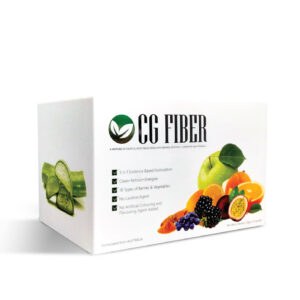Wellness
Is Fiber good for people with Diabetes?
According to the National Health and Morbidity Survey (NHMS) 2019, (1) the overall prevalence of diabetes in Malaysia aged 18 years and above was 18.3%, which means 1 in 5 adults have diabetes and that was about 3.9 million people. From this data, 9.4% know they have diabetes while 8.9% do not know they have diabetes. This trend has been increasing every year and quite worrying.
The prevalence increased with age and peak among 65 to 69 years old with 43.4%. Between males and females’ prevalence were 18.2% and 18.4% respectively with females have the highest of 9.8% prevalence of known diabetes while males have the highest of 9.2% prevalence of not known to have diabetes. Following the ethnicity, Indians had the highest prevalence of known and not known diabetes at 31.4%, followed by Malay at 21.6% and Chinese 15.1%.
.
Fiber is a type of carbohydrate and a part of plant foods that is non-digestible by the body. There are two types of fiber that is soluble fiber (dissolves in water) and insoluble fiber (does not dissolve in water). (2) Studies have shown that diets high in fiber helps in preventing many chronic diseases such as diabetes. (3) For people with diabetes or those who want to control their blood glucose level, taking soluble fiber is very helpful as it helps to slow down the digestion, regulate the body’s use of sugar and help to keep hunger and blood sugar in check.
Benefits of Fiber in managing Diabetes
Steady blood sugar
People with type 2 diabetes have to eat more fiber because it can help improve blood glucose control. (4) Human body is unable to absorb and break down fiber, that’s the reason why fiber does not cause a spike in blood glucose the way other carbohydrates can. When fiber is digested, the body handles it different way than in which refined carbohydrates are digested. A portion of the fiber can slow the absorption of sugar from foods and this difference means that eating food rich in fiber is likely to steady the blood sugar after eating.
Boost weight loss
Fiber-rich foods stay longer in the stomach and cause a longer period of fullness because it cannot be digested and thus it moves slowly through the stomach. Many foods high in fiber also tend to be low in calories and eating this low-calorie fiber sources may cause to eat less, next leads to weight loss. While weight gain is a known risk factor for developing type 2 diabetes, research also shows that weight loss in those type 2 diabetes people can help control the blood sugar levels. (5)
Reduce risk of heart disease
The increased blood glucose levels that occur from diabetes can damage the blood vessel and nerves that control the heart and blood vessel. This damage can narrow blood vessel over time, leading to heart disease. People with diabetes have a high risk of developing heart disease. Adequate soluble fiber intake can reduce the risk of developing heart disease by lowering the low-density lipoprotein cholesterol (LDL-C). (6) The soluble fiber does this by binding to cholesterol particles in the small intestine, preventing these particles from entering the bloodstream.
How to add Fiber to a Diabetes diet
Read nutrition labels
In nutrition labels, the food is classified as good source of fiber and high-fiber serving when it has 2.5 to 4.9 grams and 5 grams respectively of fiber per serving. (7) At the same time, keep track on how much fiber that have been eaten and follow the recommended adults’ intake of 20 to 30 grams of fiber daily (8) for best health outcomes.
Know food sources of fiber
Some of the foods or ingredients that are a good source of fiber (8) and you should look for are brown rice, whole-grain of bread, cereals and pastas, vegetables and fruits, legumes, oats, barley, nuts, beans, peas and lentils.
Avoid processed and refined foods
Plan on adding some time for food preparations instead of eating foods that are cheap, quick and easy to grab such as fast food because you probably not getting enough fiber that you need from it. Look for high fiber options and healthy foods/snacks like salad and veggie sticks.
Go slow
Increasing the amount of fiber in the diet can have great benefits, but sudden increase in fiber consumption can lead to uncomfortable digestive symptoms such as bloating, gas, constipation, diarrhea and cramps. (9) So, increase the fiber in diet gradually by adding bit by bit every few days. Spread the fiber intake throughout the day rather than cramming it into one single meals or snacks, and drink sufficiently of water.
Here are some simple ways to start
- Aim to eat three to five servings of non-starchy vegetables every day.
- Consume two servings of high-fiber fruits such as apples or pears daily.
- Include plenty of whole grains such as whole-grain bread, oatmeal, and grains.
- Snack on unsalted nuts and low-fat or unbuttered popcorn.
- Sprinkle some flax seeds or chia seeds into yoghurt.
- Include legumes, chickpeas into salad for a fiber boost.
Other benefits of Fiber
Antioxidants
The high fiber food are where the antioxidants are. Many of the foods that contain fiber also contain antioxidants, which are generally good for cells and overall health.
Hunger control
Food rich in fiber can help to feel full for a longer time. Starving off the hunger stomach might lead to snacking on foods that will cause higher blood sugar levels.
Portion control
It is easier to stick to the proper portions of food, because fiber fills the stomach up. In contrast, any refined foods that lack of fiber tend to make you crave for more, thus making it easier to eat any food in excess.
References:
- National Health and Morbidity Survey (NHMS) 2019: Non-Communicable Diseases, Healthcare Demand and Health Literacy. Institute for Public Health (IPH), National Institutes of Health (NIH), Ministry of Health (MOH) Malaysia, 2020.
- Anderson J., Baird P., Davis R., & et al. Health benefits of dietary fiber. Nutrition Reviews. 2009 Apr; 67(4): 188-205.
- Evans C. E. L. Dietary fibre and cardiovascular health: a review of current evidence and policy. Proc Nutr Soc. 2020; 79(1): 61-67.
- Weickert M. O., & Pfeiffer A. F. H. Impact of dietary fiber consumption on insulin resistance and the prevention of type 2 diabetes. J Nutr. 2018; 148(1): 7-12.
- Wilding J. P. The importance of weight management in type 2 diabetes mellitus. Int J Clin Pract. 2014; 68(6): 682-691.
- Soliman G. A. Dietary fiber, atherosclerosis, and cardiovascular disease. Nutrients. 2019; 11(5): 1155.
- Dietary Fiber. Interactive Nutrition Facts Label. U.S. Food and Drug Administration (FDA). 2020.
- Recommended Nutrient Intake (RNI) for Malaysia 2017. Putrajaya: National Coordinating Committee on Food and Nutrition (NCCFN), Ministry of Health (MOH) Malaysia, 2017.
- El-Salhy M., Ystad S. O., Mazzawi T., & et al. Dietary fiber in irritable bowel syndrome (review). Int J Mol Med. 2017; 40(3): 607-613.
Health Food



Thanks a lot for the post.Really thank you! Keep writing.
I’ve read some excellent stuff here. Definitely value bookmarking for revisiting. I surprise how much effort you put to create this kind of magnificent informative website.
I am not sure where you are getting your info, but
great topic. I needs to spend some time learning much more or understanding more.
Thanks for excellent info I was looking for this
information for my mission.
Thanks very interesting blog!
I?m impressed, I have to say. Really not often do I encounter a blog that?s both educative and entertaining, and let me inform you, you could have hit the nail on the head. Your thought is excellent; the problem is one thing that not sufficient people are speaking intelligently about. I’m very pleased that I stumbled across this in my search for something referring to this.